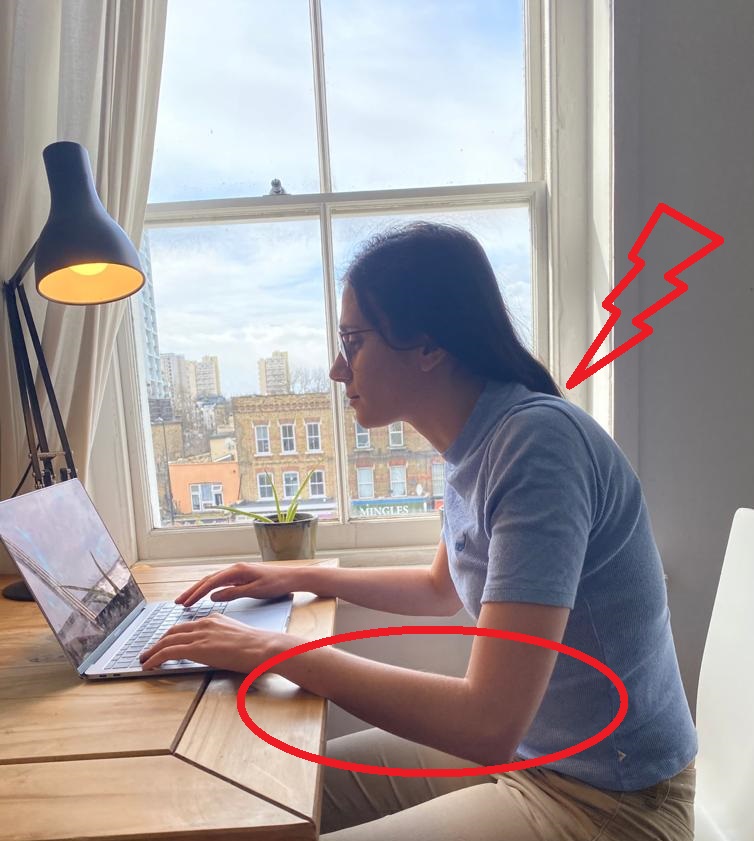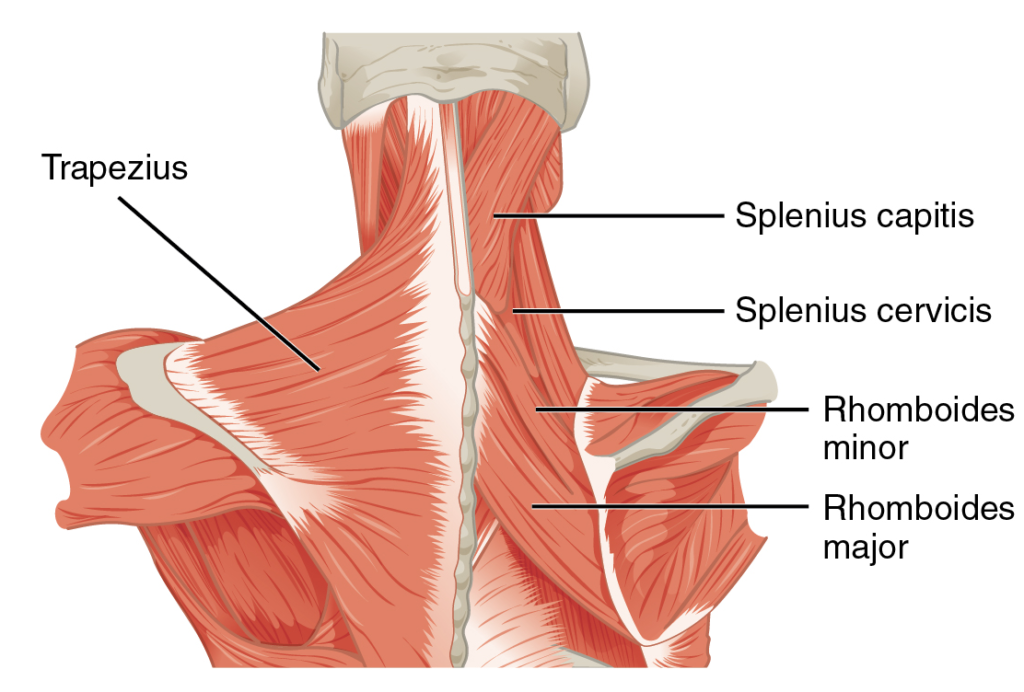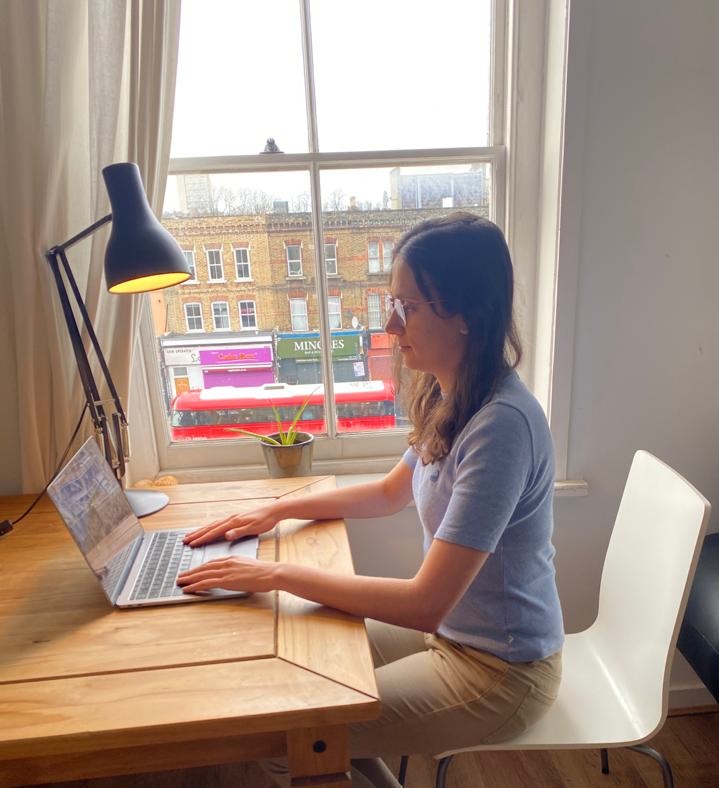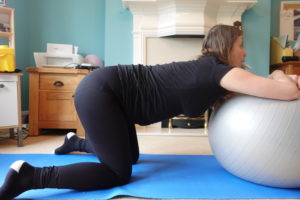If you just want the exercises, scroll down to the end of the article 😉
Neck & upper back pain are nothing new, especially if you work sitting in front of a computer! However, with the pandemic and a majority of people now working from home, physiotherapists & osteopath are witnessing a surge in the number of patients presenting with neck, back, shoulder pain or pins & needles and numbness in their upper limbs. The main reason are:
- Sedentary life (nothing new under the sun…)
- Bad workstation set up (definitely worse since you started working on a kitchen table with a laptop without additional screen!)
What cause Neck & Upper Back pain when sitting in front of a computer?
Human body need movement
Our body is simply not good at staying in the same position for hours. Doesn’t matter how ergonomic your chair is, you still going to engage the same muscles for hours making them tired and leading to muscles soreness.
Lack of physical training
Your body/muscles have a certain ability to adapt to an effort, stress, etc. This ability increase or decrease depending of the level of physical activity you have. As well as a half marathon can lead to a lot of pain for a person who never run or be a simple training session for a marathon runner, your ability to sit in front of a computer can be improved… or worsen if you don’t practice any sport.
Bad workstation set-up
As I explained above, no matter how ergonomic your workstation is, staying sitting for hours daily will still be damaging to your body. However, a bad workstation can definitely make it a lot worse!
Why sitting in front of a computer can cause Neck & Upper Back pain?
Let’s try to understand why sitting in front of a computer trigger particularly neck and upper back pain. For this purpose, we need to do a bit of biomechanic and look at our posture when we sit in front of a computer to identify two very common problems:

Neck pushed forward
As you get tired sitting for long hours, there is a tendency to bring your head forward. This phenomenon is even stronger if you use a laptop as the screen being too low will bring you to lower your head. This position is going to load particularly the muscles of your neck and upper back like the trapezius, splenius capitis, levator scapulae. See the end of this article for exercises to stretch these muscles.
Hands above the keyboard with forearm not supported
Not having your forearms supported is also a big factor in upper back pain. Your hands may not seem an heavy weight, nonetheless, if you keep them 8 hours a day above your keyboard it is an important strain on your shoulder and upper back muscles.
The muscles most impacted are the rotator cuff muscles, rhomboides and levator scapulae as they word together to pass the weight from your upper limbs to your spine. It is the common cause of shoulder pain and pain localised between the shoulder blade linked to sitting in front of a computer. See the end of this article for exercises to stretch these muscles.

How to prevent Neck & Upper Back pain when sitting in front of a computer?
How to set-up a good workstation to reduce the risk of neck & upper back pain?
I don’t intent here to give a comprehensive ergonomic analysis on how to sit correctly. However, if we only focus on the two postural issues mentioned above, the first step will be to maintain your head above your shoulders and move your laptop further to have your elbow supported.

The second step would be to invest in a separated screen monitor and keyboard to give more room to adaptation like placing the screen at a correct high. Then you can even replace the old kitchen chair and table to invest in proper home office furniture!
Regular physical exercises
As mentioned previously a good fitness level is a key to prevent neck & back pain when sitting at a desk. Often my patients ask me what is the best sport for their problem. The best sport is actually the one you like, because you need to do it not only until the pain is gone but for the rest of your life. Here an example of exercise program to maintain a good fitness level:
See a physiotherapist or osteopath
If you suffer from neck or back pain, it is always worthwhile to visit a physiotherapist or osteopath. They will be able to diagnose your problem and put in place a treatment specific to your needs. These treatments include manual therapy, trigger point, trust techniques and exercise programme.
Stretching and strengthening exercises!
See below 😉
4 Exercises to decrease Neck & Upper Back pain when sitting in front of a computer
These stretches won’t solve the root cause of the problem but they will alleviate part of the pain. As mentioned above, the following muscles are often overloaded when you sit in front of a computer, especially if you have a bad posture.
1) Trapezius
This stretch is especially useful for neck pain. You should feel the stretch on the side of your neck.
2) Levator Scapulae
This second stretch is very similar to the previous one, but you should feel the stretch more backward, in the upper back.
3) Rhomboid
This 3rd stretch is slightly more complicated as it aims as a muscle located between your spine and shoulder blade. However, it’s a very efficient stretch for pain located between your shoulder blade.
4) Global back stretch
On the contrary of the previous stretch exercises, this one doesn’t aim at a specific muscle but is more versatile. With this last stretch you can aim at different part of your back and it is up to you to adapt it to feel the stretch in the desire area.



